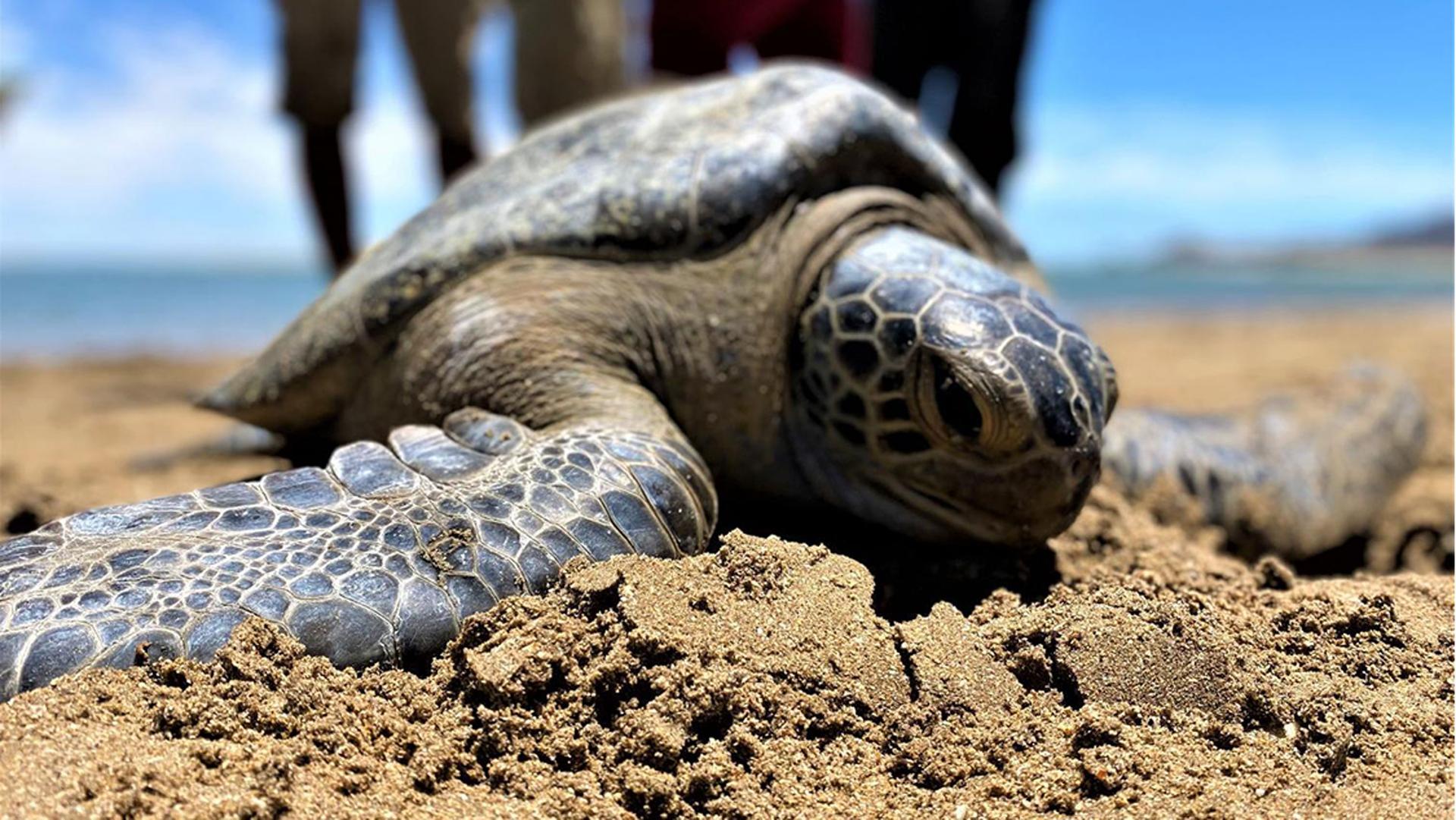Kino Bay’s Becerra family gave up traditional fishing to focus on saving sea turtles
A group of volunteers were afloat in a small blue and white boat, or panga, just off the shore of Laguna La Cruz — a wetland area on the southern end of Bahia de Kino, Sonora, on the Gulf of California.
“There’s one! There’s one,” a volunteer shouted, pointing to a submerged buoy on the wide, nylon net the group set earlier in the morning to trap and monitor green sea turtles.
When the buoys sink below the surface, it lets the volunteers know a turtle is in the net. The volunteers quickly moved closer to pull the oceangoing reptile out of the water.
Green sea turtles are an endangered species and among the largest of their kind in the world. They’re also the only herbivorous sea turtles. Now, some conservation groups, like the volunteers in the panga, are trying to protect them.
It was a hot May morning, and three young men sweated as they heaved the large, gray and green turtle out of the net. Its flippers flailed and slapped as the volunteers carefully lowered it into the bottom of the boat and covered its head with a damp towel to keep it calm.
“It’s a little stressful for them, but it’s the only way,” said Cosme Becerra, a former fisherman who left the family trade more than a decade ago.
He leads this conservation group, known as the Kino Bay Tortugueros — which means something like “turtle wranglers” in Spanish.
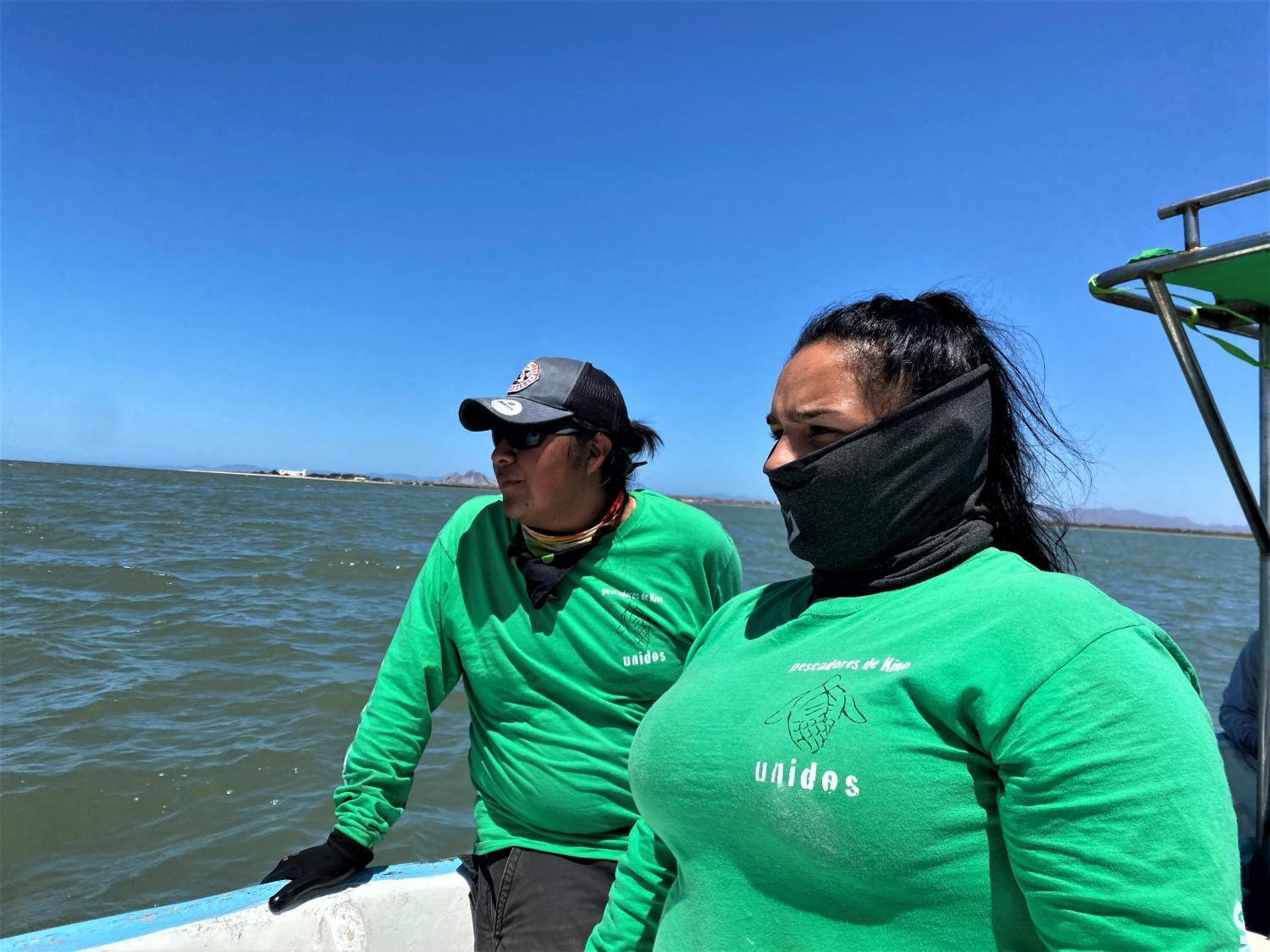
Many approach Laguna La Cruz to eat seagrasses that grow in the wetland area. But they can also get tangled in nets fishermen use in this region, preventing them from surfacing for air and drowning them — the leading cause of turtle deaths in this area, Cosme Becerra said.
Not long ago, Cosme Becerra’s nets were among those that occasionally ensnared turtles.
The turtle’s cry
“We never hunted them,” he said. “The turtles we caught were bycatch when we were working with large nets. And, well, sometimes turtles got caught. If they were alive, we let them go. But if they were dead, we ate them, if they were in good condition.”
And on a few occasions, he sold the turtles for quick cash to help out with family emergencies, like once when his son was in the hospital.
Then, in the mid-1990s, he was tasked with killing a turtle for a public official who was having a party. He kept it in his family’s bathroom until the day of the event.
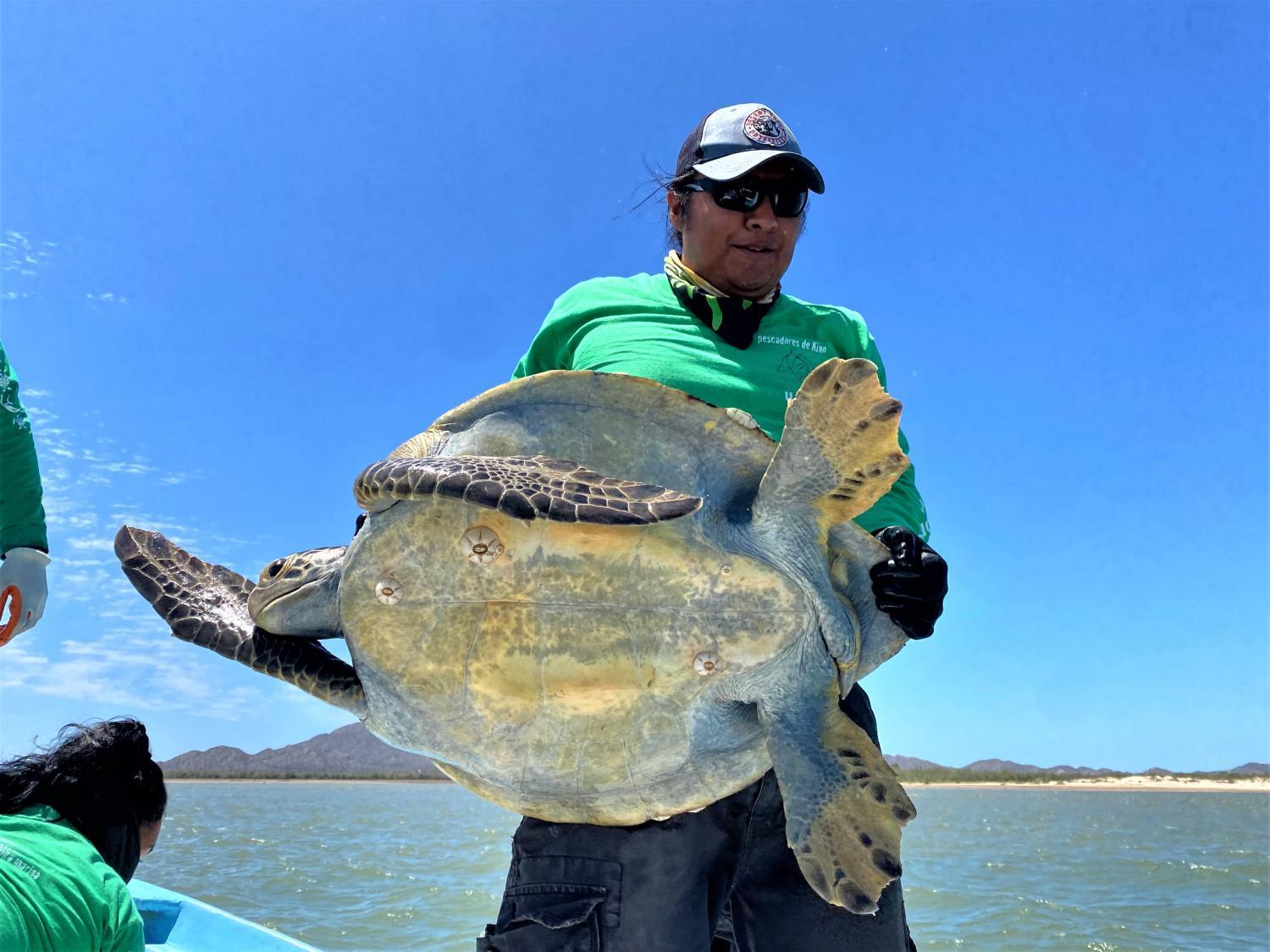
“And the turtle was constantly making its noise: huuuu, huuuu,” he said, imitating the sound of the turtle’s breathing. “And all night that breath, that noise kept me awake, on the one hand. On the other hand, Moni, my wife, wouldn’t let me sleep.”
All night, she pleaded with him to free the turtle, saying it sounded like a woman crying and that its tears were puddling on the bathroom floor.
“‘Let her go, please,’ she begged,” he recalled. “I didn’t want to let it go because it wasn’t mine. It belonged to this official.”
But eventually, he conceded. In the morning, they released the turtle.
“And since then, we haven’t eaten or killed turtles,” he said.
Grupo Tortuguero de Bahia Kino
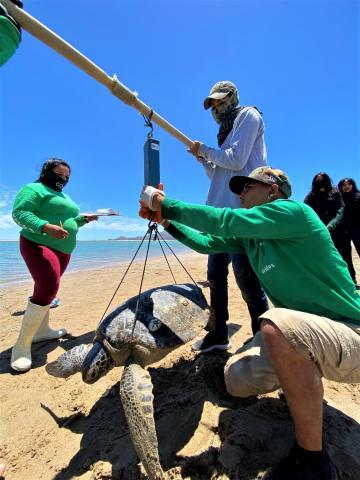
In 2010, Cosme Becerra and his brothers started working in sea turtle conservation, joining a national network of volunteers, known as Grupo Tortuguero de Bahia Kino, who monitor turtles and collect data on their health, reproduction and migration patterns.
He said it’s a way to repay, in part, what he took from sea turtles in the past.
In the 12 years since they started, they’ve registered more than 800 sea turtles off the coast of Kino Bay. And now, 15 members, and three generations, of the Becerra family volunteer as tortugueros.
“I have my … everybody,” Cosme Becerra said with a laugh. “Now, I have Cosme Damian III following in my footsteps. That’s my legacy.”
Cosme Becerra said his grandson, now in second grade, gave a presentation to his class about his family’s conservation work last school year. It was a proud moment, he said, and one that gave him hope for the future. He’s seen the way working in conservation has changed his family, and his community.
And now, the tortuguero group is working to train others to do similar work in the region as well.
Giving back
Five young adults from the nearby town of Punta Chueca, in the Indigenous Comcaac Nation, joined the Becerra team out on the boat this time as they loaded up turtles — seven in all.
Damar Becerra, Cosme Becerra’s niece and part of a new generation of Becerra conservationists, walked the Comcaac trainees through registering the turtles. For each one, they took down basic information: the number of scales, or scutes, on its shell; visible injuries, illnesses or barnacles and if it had a small metal tag on each back flipper — indicating that it had been registered somewhere before.
The first turtle they captured that day was Nalo, who was first registered two years ago.
As the group motors backed to the shore to collect additional data on the turtles, Nalo breathed heavily in the bottom of the boat, and the young Comcaac trainees poured water over him and the turtles to keep them hydrated until they reached the shore.
“It’s like putting in my grain of sand, doing my part,” said Alfonso Morales, 22. “It’s like exchanging a little bit of work to protect this species for all that it’s given us.”
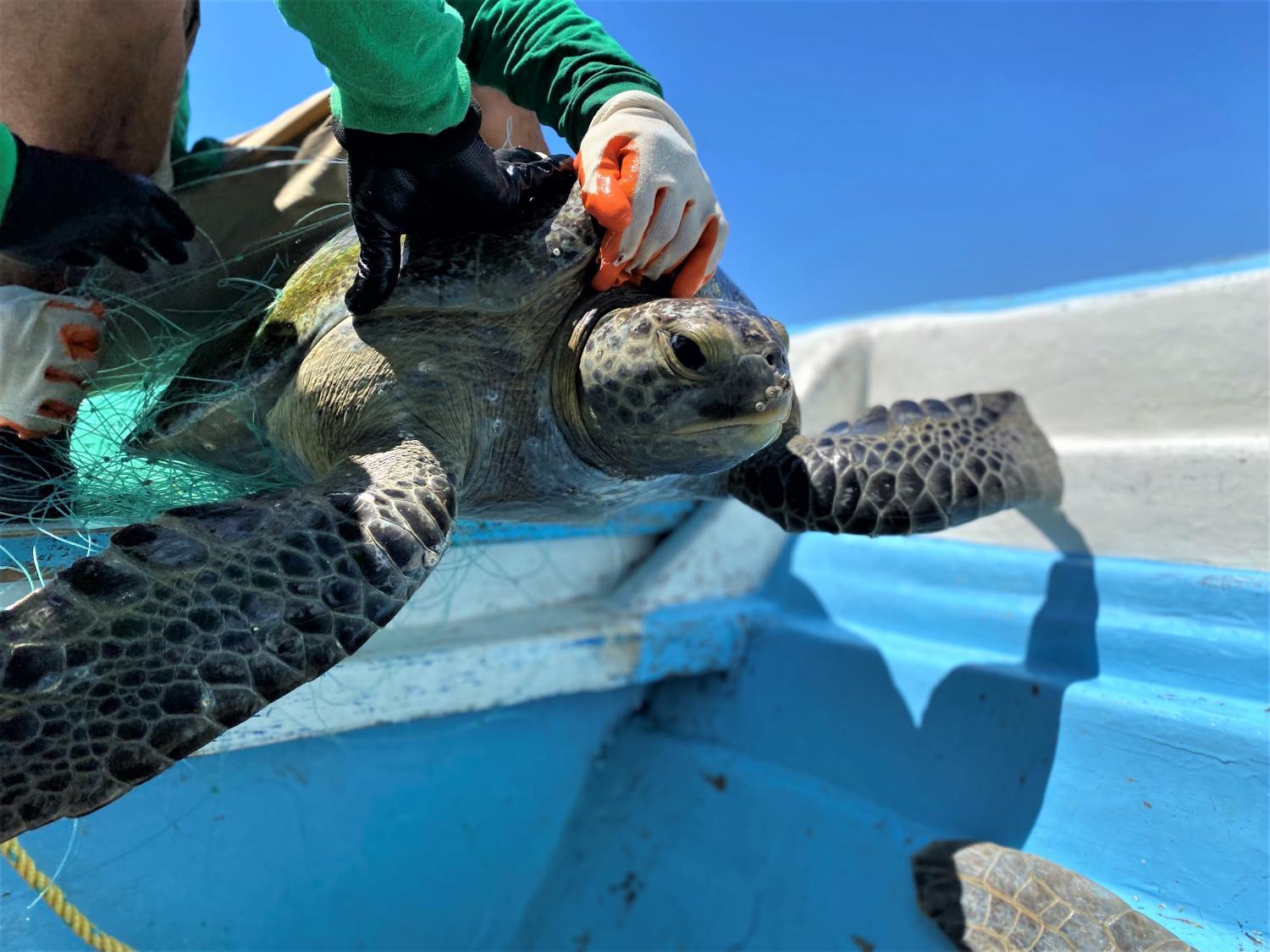
Like Becerra, Morales joined the tortuguero group as a way of giving back to sea turtles — a species that he said has provided sustenance to his people for millennia, helping them survive in the Sonoran desert. In the Comcaac creation story, a turtle carried sand from the ocean floor that the creator used to form the land.
“It’s a fundamental part of our culture, our songs, our stories,” he said. “And for us, it’s important to preserve the species just like it’s important to preserve our culture.”
“They have the ability to register a lot of turtles, and many different species,” added Damar Becerra. “They can really help us with information about sea turtles in this region.”
In part, that’s because the nearly 116-square-mile Infiernillo Channel lies within Comcaac territory. Protected under the Ramsar wetlands convention, the channel is known for its incredible wealth of seagrass beds, mangroves and other important habitats for marine species, including all five sea turtle species in the Gulf of California — green, hawksbill, loggerhead, leatherback and olive ridley.
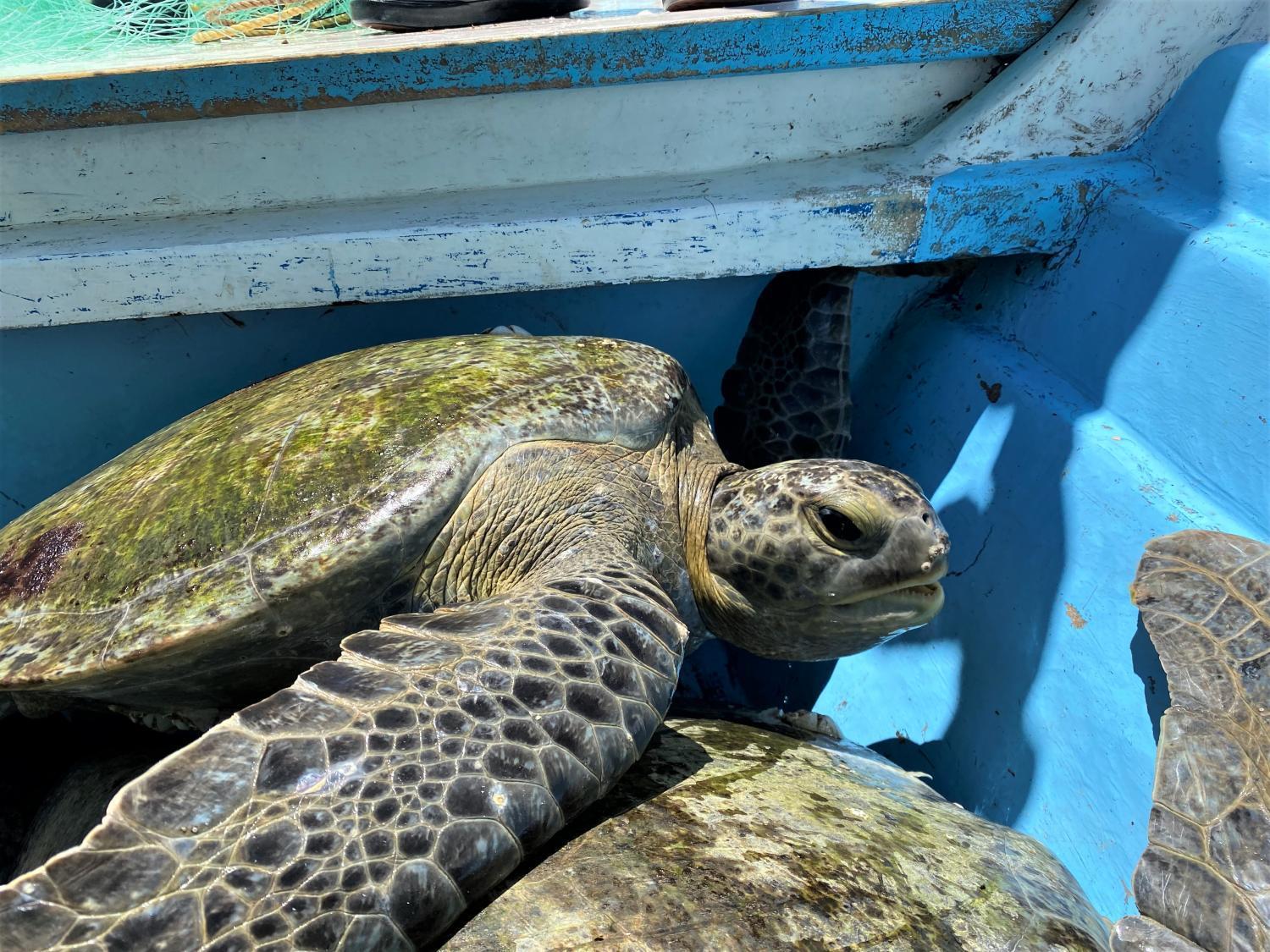
Community outreach
Pulling up to the beach of the Laguna La Cruz, also known as the Santa Cruz Estuary, the tortugueros carried the turtles to shore one by one.
Using tape measures, scales and other equipment, they weighed and measured each turtle, then tagged and named them.
As they worked, nearby beachgoers approached for a closer look at the huge turtles and asked questions about the tortugueros’ work and about the animals. Some of them — especially children — liked to help give the turtles names, like Pirata, or Pirate.
“That’s the most important thing we do,” Cosme Becerra said afterward. “We’re planting that seed in the community.”
For Damar Becerra, it’s a sense of pride, answering as many questions as they can and being recognized for their conservation efforts.
Nowadays, other fishermen sometimes bring the tortugueros turtles that have gotten caught in their nets, or in ghost nets, as abandoned nets are often called.
“It means we’re doing our job,” she said.
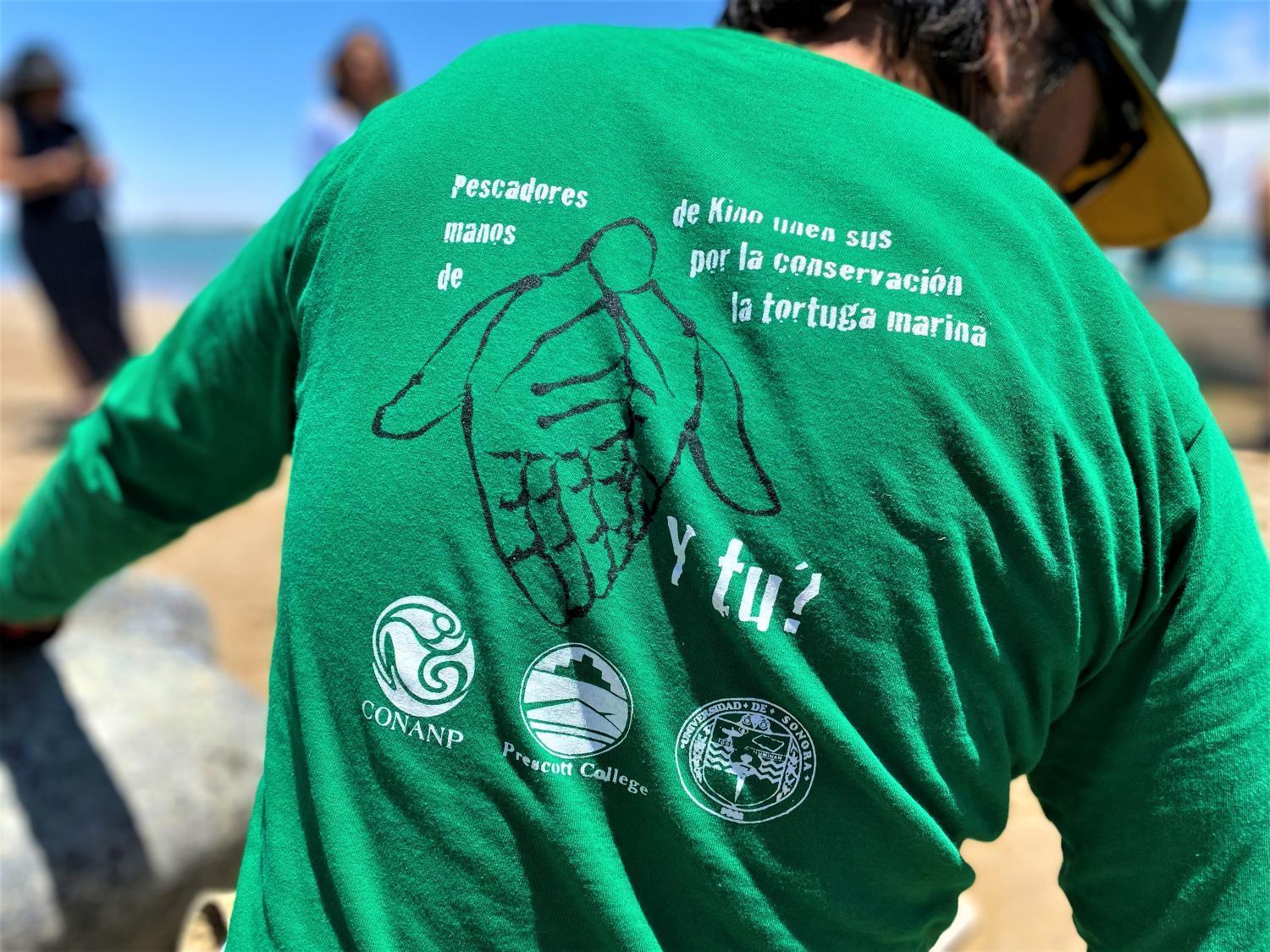
Damar Becerra, 22, has been volunteering with the conservation group for about four years, taking over for her father when he stepped down.
At first, she said, she was afraid — worried that the turtles might bite her as she pulled them out of the water. But, like the other women in her family, she wanted to be where the action is, just like the men.
“And I told myself, ‘Why not do it? I’m a woman, but I can do the things that men do,’” she said.
Now, her favorite part of the work is being out on the boat.
It’s not easy work, particularly because needed funding can be hard to scrape together, she said. But her family always finds a way.
“We don’t give up,” she said. “We’re a family that never gives up.”
As the work wrapped up that morning, the final turtle, Frida, crawled back to the sea and swam out into the calm, blue waters.
“Although the turtles have to pay this little bit, it’s worth it,” Cosme Becerra said of the discomfort turtles suffer when being captured and handled. “That’s how we get the information we need to protect them.”
It’s for the good of the turtles, he said, and for all of us.
An earlier version of this story was originally published by KJZZ in Arizona.
Our coverage reaches millions each week, but only a small fraction of listeners contribute to sustain our program. We still need 224 more people to donate $100 or $10/monthly to unlock our $67,000 match. Will you help us get there today?
